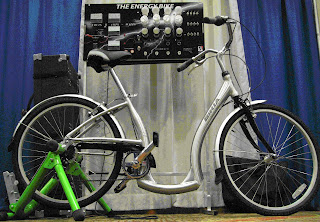By: Alyssa Swanson
Do you ever return home from the store and feel that your pocket book feels lighter than you remember it being when you left? Do you find yourself retracing your steps trying to recall where and how you spent your money? San Diego’s Gas & Electric created an app to help solve the mystery… at least with your energy bill. Customers with the app can see when and how they use electricity on their smart phone.
On October 1st, 2012, San Diego Gas & Electric and Candi Controls released the "Green Button Connect My Data" platform. The launch of their first app enables customers to view their household’s energy use by the touch of a button. The innovative and cutting edge PowerTools feature allows customers to view the ways in which they use energy, but also shows them effective ways to save money and energy. This nifty app provides an overview of energy use and savings relative to history, illustrates environmental impact, and allows customer’s to make utility bill payments.
The “Green Button” technology fulfills the fast paced lifestyle of the consumer as it offers secure, easy and on-the-go access to information. This trending smart phone phenomenon is expected to grow in popularity in the next months to come empowering customers around the country to participate in energy efficiency from their mobile devices!
Do you ever return home from the store and feel that your pocket book feels lighter than you remember it being when you left? Do you find yourself retracing your steps trying to recall where and how you spent your money? San Diego’s Gas & Electric created an app to help solve the mystery… at least with your energy bill. Customers with the app can see when and how they use electricity on their smart phone.
On October 1st, 2012, San Diego Gas & Electric and Candi Controls released the "Green Button Connect My Data" platform. The launch of their first app enables customers to view their household’s energy use by the touch of a button. The innovative and cutting edge PowerTools feature allows customers to view the ways in which they use energy, but also shows them effective ways to save money and energy. This nifty app provides an overview of energy use and savings relative to history, illustrates environmental impact, and allows customer’s to make utility bill payments.
The “Green Button” technology fulfills the fast paced lifestyle of the consumer as it offers secure, easy and on-the-go access to information. This trending smart phone phenomenon is expected to grow in popularity in the next months to come empowering customers around the country to participate in energy efficiency from their mobile devices!
To learn more about San Diego Gas & Electric click here: http://www.sdge.com/
Find more in the recent press release "SDG&E & Candi Controls Launching 'Green Button Connect My Data' Powertools App" on October 1, 2012.
Find more in the recent press release "SDG&E & Candi Controls Launching 'Green Button Connect My Data' Powertools App" on October 1, 2012.




























